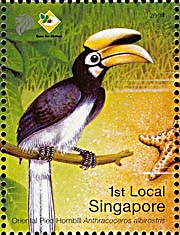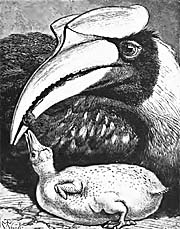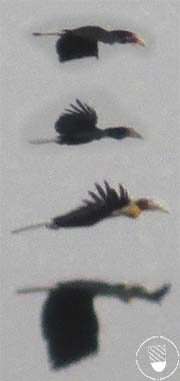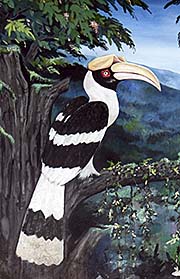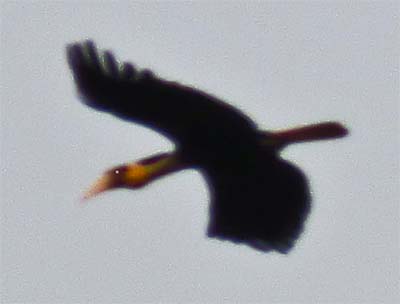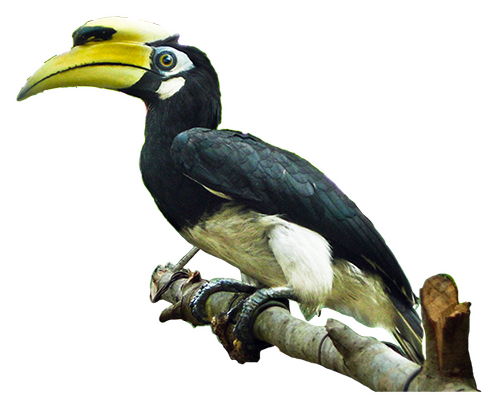
Hornbills in Southeast Asia
H
ornbills are a family of birds who fall into fifty different species. They live in the tropical regions of Asia and Africa. All hornbills live, like ducks and geese, monogamous.
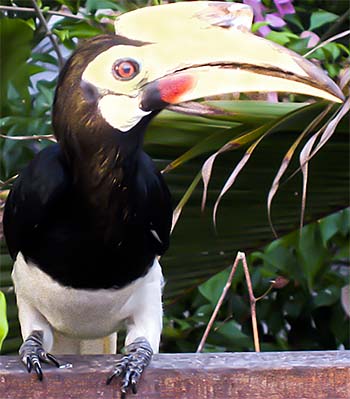
Oriental Pied Hornbill. Image by Asienreisender, Pangkor Island, 12/2009
The hornbills nesting habits are quite curious. The female takes nest inside a hollow of a tree trunk which she seals with a wall of saliva, fruit rests, mud and tree bark. Only a small hole remains in this wall, which serves as a feeding hole. The male brings food then for the female and the chicks for about 30 to 40 days. The covering wall is a protection against monkeys and snakes who are after the eggs and chicks. There are many maquaces on Pangkor Island (see below) who are predatorily. And many snakes as well. The hornbills chicks remain in the nest until they are ready to fledge.
Threats for hornbills are habitat loss due to legal and illegal loggin and hunting. Hornbills are marketed as pets and sometimes as stuffed souvenirs. Tribal people often threaten hornbills by using certain parts as trophies or medicine, while chicks are being considered a delicacy.
Oriental Pied Hornbill
There are few occations that one can come very close to wild and rare animals, especially if they are birds. On tropical Pangkor Island, at the west coast of peninsular Malaysia, it's easy to watch a certain kind of hornbill, the Oriental Pied Hornbill, from the distance of an armlength.
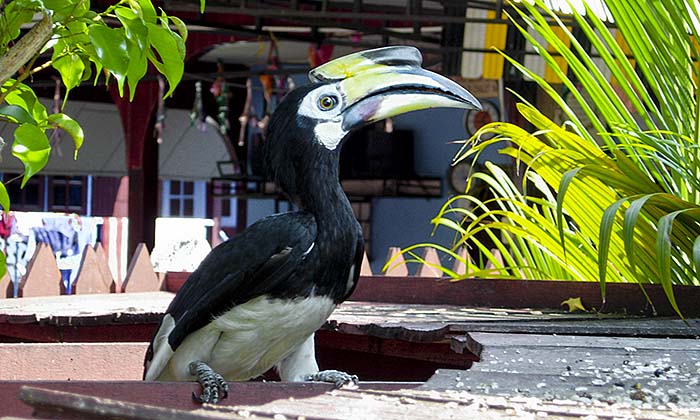
A Oriental Pied Hornbill on Pangkor Island, west Malaysia. Image by Asienreisender, 2/2005
The reason for being so tame is that they get fed frequently by the neighbourhood in Teluk Nipah. The feeding is a daily routine and happens short before dusk. That's certainly also the reason for the large population of hornbills there.
These charming fellows feed on fruits, insects and small animals like lizards, snakes, fish, small birds and frogs. Their nests are built in tree holes.
The Oriental Pied Hornbill is endemic throughout Southeast Asia and the Indian subcontinent. They naturally live in tropical and subtropical moist lowland forests, but adapt also to other kinds of forest including secondary forests and plantations. However, they prefere habitats undisturbed by humans.
The Oriental Pied Hornbill is described as the most common hornbill of the whole family. I have never seen one at any other place than Pangkor, though. This species is also the smallest of all hornbills. An adult's length from head-to-tail is about 55cm to 60cm. The average weight is around 900 grammes.
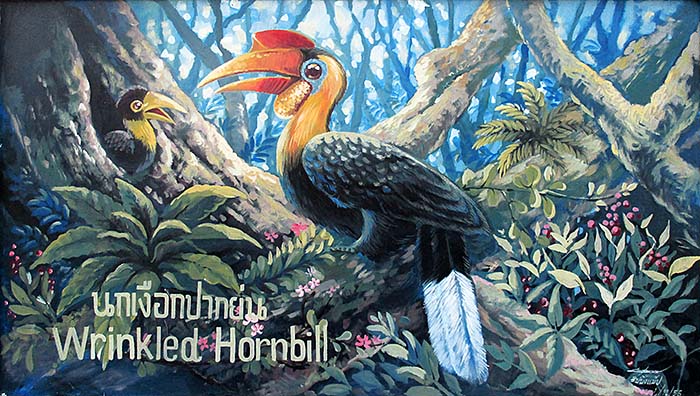
A wrinkled hornbill with it's chick. Painting on the outer walls of Dusit Zoo, Bangkok. Image by Asienreisender, 8/2015
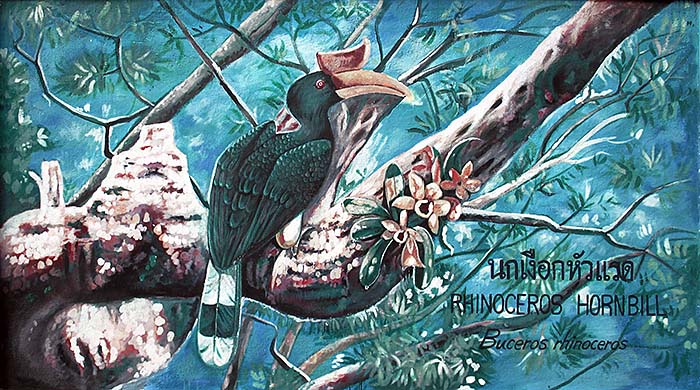
Painting of a rhinoceros hornbill on the outer walls of Dusit Zoo, Bangkok. Image by Asienreisender, 8/2015
Great Hornbill
Beside the smaller hornbill there are also great hornbills (great Indian hornbill) living in the forests of parts of South and Southeast Asia.
I watched also them on Pangkor Island. For that, one needs a binocular, because they always keep on distance from humans. There is one tall tree in Teluk Nipah which was occupied by some great hornbills in the years 2005 - 2012. Most of the great hornbills I ever saw was in the Areng Valley, Cardamom Mountains, where they appear quite often. I personally saw every day several of them there.
The great hornbill gaines a length from head to tailend of 95cm to 130cm and a wingspan of around 150cm. They are easy to hear when flying in the surroundings, because their wings make a wiping noise. These birds live in groups up to 40 individuals.
These larger birds feed mostly from fruit and rather exceptionally from smaller animals like insects and lizards. The fruit diet makes them important dispersers for many forest tree species. A great hornbill reached a recorded age of 50 years in captivity. However, breeding in captivity was always little successfull.
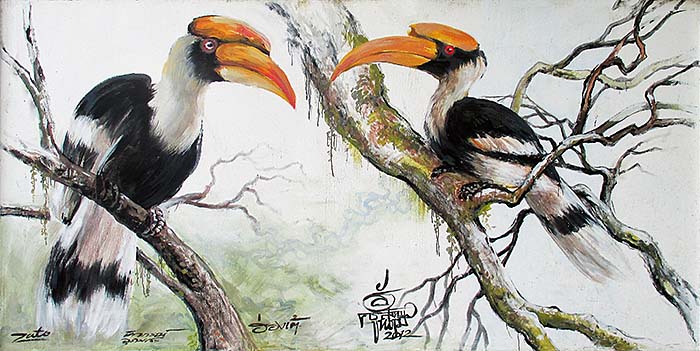
Painting of two great hornbills at the outer walls of Dusit Zoo, Bangkok. Image by Asienreisender, 8/2015
